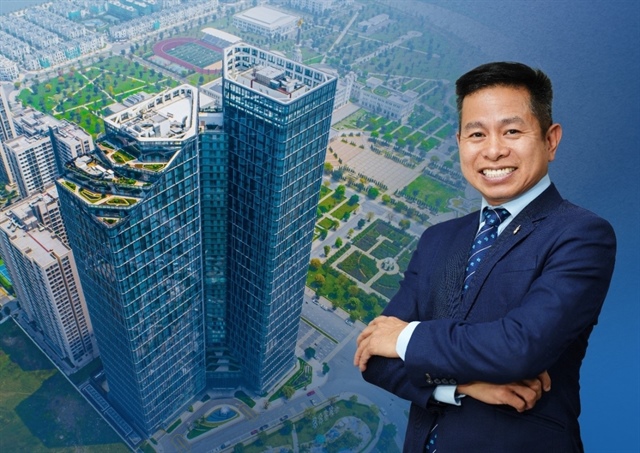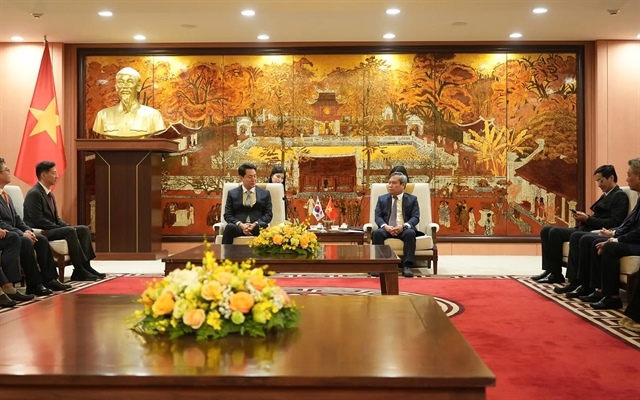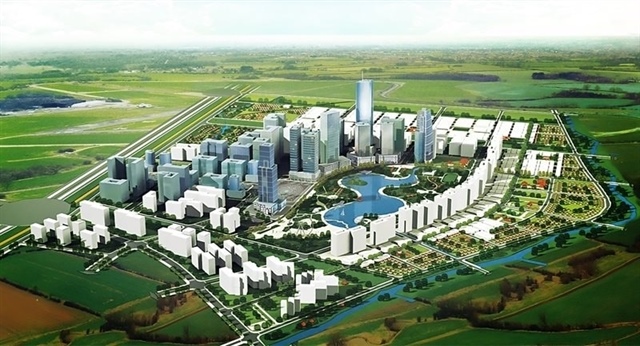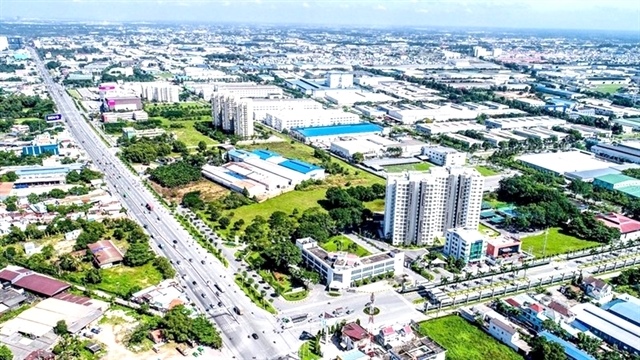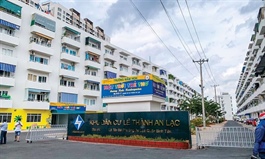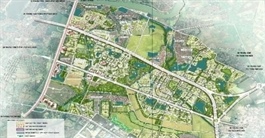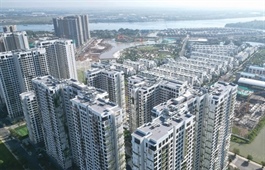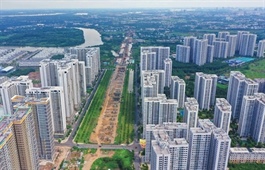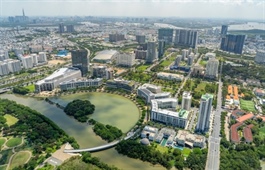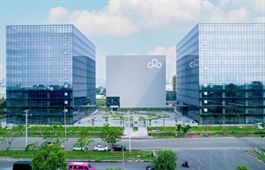Resilient industrial system within reach
Resilient industrial system within reach
A new focus on private sector development should create the best conditions for businesses in industrial real estate and eco-industrial parks to grow more sustainably.

If implemented effectively, the new private sector vision can help remove industrial production barriers, photo Le Toan |
Tran Xuan Luong, deputy director of the Vietnam Real Estate Market Research and Evaluation Institute, said that if the Politburo’s Resolution No.68-NQ/TW is implemented comprehensively and effectively, it will not only remove bottlenecks related to production space but also contribute to forming a sustainable and resilient industrial ecosystem.
“The resolution will help nurture domestic enterprises, especially small businesses and tech startups. With support in land access, infrastructure, and initial costs, these enterprises will have opportunities to overcome market entry barriers, thereby forming a new production force for the digital economy,” Luong said.
According to VinaCapital, one of the direct positive impacts of Resolution 68 is that localities will be required to allocate dedicated land areas, including portions within each industrial park (IP), for small and medium-sized enterprises (SMEs) and innovative startups.
“Private enterprises will enjoy a 30 per cent reduction in land lease fees during the first five years of the lease contract,” said Michael Kokalari, chief economist of VinaCapital.
“The resolution also promotes digital transformation and innovation by encouraging enterprises to invest in research and development (R&D), digital transformation, and to use state-owned research infrastructure at reasonable fees. R&D and innovation-related investment costs will be eligible for up to 200 per cent tax deduction,” Kokalari added.
Based on the orientation of Resolution 68, the Vietnam Industrial Real Estate Association (VIREA) proposes a multi-stakeholder cooperation model for IP development, involving private infrastructure developers, secondary investors, local authorities, and international consulting organisations.
This model aims to share resources, distribute risks, and enhance investment efficiency, aligning with the policy of promoting public-private partnership models. Notably, Resolution 68 also emphasises the need to diversify capital sources from the state budget, businesses, organisations, and individuals, both domestic and foreign.
On that basis, the VIREA recommends establishing a sustainable IP development investment fund, characterised by mobilising capital from multiple sources, offering incentives for eco-IP projects, and applying environmental, social, and governance (ESG) standards in project evaluation and selection.
Effectively leveraging green credit policies, combined with interest rate support and incentives for businesses implementing circular projects and applying ESG standards, is seen as an essential step towards realising the goal of sustainable industrial development in the coming period, he added.
To address the bottleneck in land access for SMEs, Luong from the Vietnam Real Estate Market Research and Evaluation Institute proposed a comprehensive set of legal and practical solutions.
“The first thing is to legalise the requirement that at least 20-30 per cent of land in IPs and clusters must be reserved for SMEs, offered at reasonable rental rates and subject to independent oversight by the state,” Luong said.
“Secondly, enterprises need to be allowed to invest directly in infrastructure development if they fully meet environmental, technical, and fire safety standards, without being required to go through intermediaries,” Luong said. “Thirdly, processes must be streamlined for land allocation and construction permitting. It is needed to shift gradually from a pre-check to a post-check regulatory approach, and to implement a truly effective one-stop shop administrative model, not merely a formal one.”
Others are to ensure transparency in land use within industrial areas, disclosing clearly who is actively using the land, who is leaving it idle, and who is hoarding for speculation, and eliminate disguised administrative barriers, such as the requirement for construction permits.
Data from the Vietnam Industrial Real Estate Yearbook issued by the VIREA in April shows that the current economic zone system includes 19 coastal zones and 25 border-gate zones, widely distributed across key economic regions.
By 2030, Vietnam is expected to have more than 220 newly planned IPs with a total area of over 73,000 hectares, over 70 expanded IPs, 23 adjusted ones, and 300 others to be established once legal requirements are met.
- 13:00 20/06/2025


